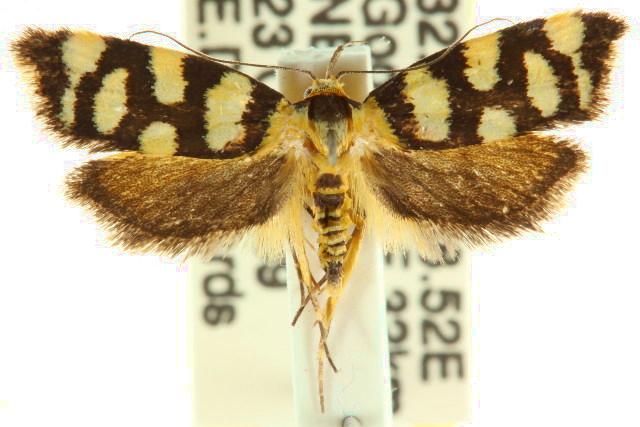
| (formerly known as Oecophora argutella) WINGIA GROUP, OECOPHORINAE, OECOPHORIDAE, GELECHIOIDEA | (donherbisonevans@yahoo.com) and Stella Crossley |

(Photo: courtesy of
Peter Marriott,
Riddells Creek, Victoria)

| (formerly known as Oecophora argutella) WINGIA GROUP, OECOPHORINAE, OECOPHORIDAE, GELECHIOIDEA | (donherbisonevans@yahoo.com) and Stella Crossley |

(Photo: courtesy of
Peter Marriott,
Riddells Creek, Victoria)
The Caterpillars of this species are gregarious, living together in a shelter of silk and in among th twigs of their foodplant. The caterpillars have been found feeding on
The caterpillars pupated in their shelter.

The adult moth has dark brown forewings each with four or five incomplete and joined transverse yellow bands. The head is yellow and the prothorax is dark brown. The hindwings are dark brown. The moth has long upcurved labial palps. The moth has a wingspan of about 2 cms.
The species is found in Australia in
Further reading :
Ian F.B. Common,
Oecophorine Genera of Australia I:
The Wingia Group (Lepidoptera: Oecophoridae),
Monographs on Australian Lepidoptera Volume 3,
CSIRO Publishing, Melbourne 1994, pp. 109, 111-112.
Philipp C. Zeller,
Exotische Microlepidopteren,
Horae Societatis Entomologicae Rossicae,
Volume 13 (1877), pp. 391-393.
 caterpillar |  butterflies |  Lepidoptera |  moths |  caterpillar |
(written 1 February 2017, updated 31 January 2025)